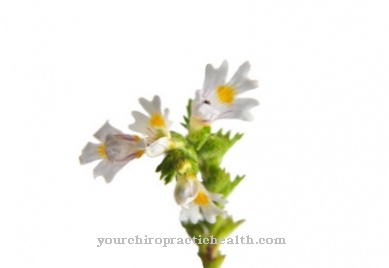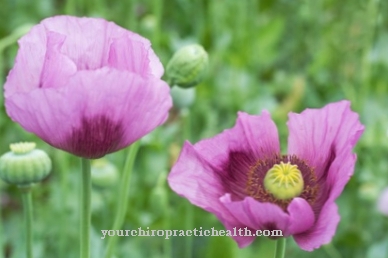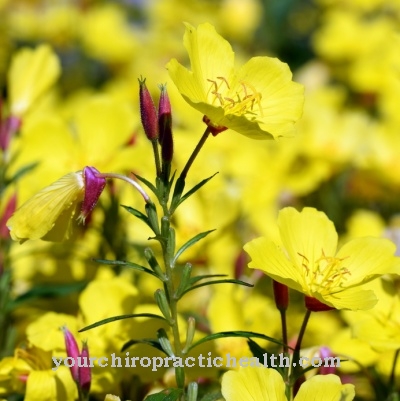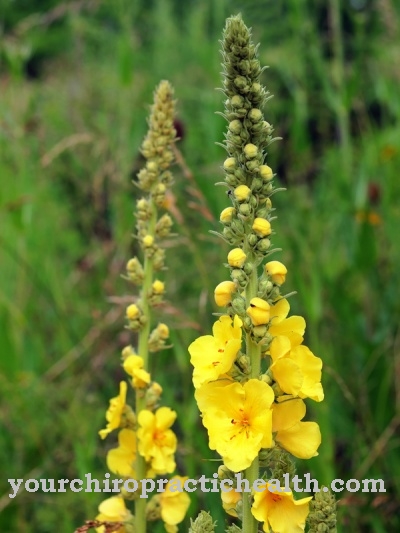The Common butterwort belongs to the carnivorous plants. In Germany it is endangered and threatened with extinction in the wild due to its dwindling habitats. In a cultivated form, plant lovers appreciate the herb because of its blue flowers and its preference for fruit flies and fungus gnats. In earlier times it was a recognized medicinal plant.
Occurrence and cultivation of the common butterwort

It is native to Europe, Russia, and North America and can thrive at altitudes up to 2,300 meters. The herb compensates for the few nutrients in boggy meadows or on the banks of a pond by catching small insects or pollen. The elongated leaves growing in a rosette close to the ground have a sticky secretion on the surface. Depending on the location, the plant blooms from May to August. The flowers are reminiscent of violets in color and shape.
They sit on tall flower stalks so that bumblebees or bees do not stick to the leaves. The herb forms egg-shaped fruit capsules with black seeds and only has weak roots. The perennial plant survives winter in the form of an onion-shaped winter bud.
Effect & application
The butterwort is mainly used today as a garden or ornamental plant. For plant lovers, it is a special attraction to have a carnivorous plant in the garden. It is easy to care for and does best in bright and sunny locations. Its flowers and evergreen leaves make it an ornamental plant for the natural garden. It is also suitable as a container plant for the window sill.
Placed in the kitchen, it eliminates annoying fruit flies or sciarid gnats. In the garden, small beetles or other insects stick to their leaves. These curl up to digest the prey. However, the plant only blooms in suitable locations with the right soil and sometimes only after years. Even if the herb is rarely found in the wild in Germany, it can easily be purchased in garden centers, hardware stores or on the Internet.
In earlier times the herb was found under the medicinal name as a medicinal plant Pinguicula herba Use. It was used to treat open wounds, broken bones, tuberculosis, sciatica and liver ailments, or stomach and breast diseases. Homeopathy attributes the plant to a pain reliever and laxative effect. The most important ingredients are mucilage, organic acids such as cinnamic acid, tannins and essential oils. The plant contains enzymes and uses benzoic acid to protect its prey from rot.The people in Scandinavia used these ingredients to coagulate milk and make cheese. For personal use, sour milk products such as Swedish milk can be made on a small scale. The plant's fermentation substances can be obtained by soaking the leaves for hours. These substances help in cheese production by allowing the milk protein to curdle. The natural scientist Carl von Linné reported about another, meanwhile, outdated use of the herb in the household: As a hair dye, it caused yellow hair and combated lice.
Importance for health, treatment & prevention
The butterwort is not used in conventional medicine. So far there is no research into possible health benefits. Other types of butterwort are mainly used in homeopathy: the little butterwort is said to promote memory performance and the kanna butterwort to lighten the mood. Folk medicine knows the common butterwort as a natural remedy for bronchitis, whooping cough and dry cough.
Herbal medicine also uses the herb as an extract or ingredient in tea mixtures for coughing. It is antipyretic, cough-fighting, wound-cleaning, wound-healing and antispasmodic. The main ingredient is cinnamic acid, which has a relaxing effect. For whooping cough, herbal medicine recommends an extract from the leaves of the herb.
Taking five drops in a tea three times a day will make it easier to expectorate and relieve the cough. To make the extract, pour hot water over the fresh leaves. Then the brew pulls for several hours. The plant parts are to be strained and finally the liquid is boiled until half of it has evaporated. Tea mixtures of the herb with sundew or plantain also help with dry coughs.
According to natural medicine, the crushed or crushed leaves help with ulcers on the skin. A home remedy for shiny and healthy long hair is a hair conditioner made from the juice of the freshly squeezed leaves. According to tradition, the brew of the herb is said to stimulate hair growth and even help with baldness. The best time to collect the leaves is from June to September.
The herb is endangered in Germany and threatened with extinction in North Rhine-Westphalia, Brandenburg, Lower Saxony and Schleswig-Holstein. It is advisable not to collect wild plants, but to use those in the garden. Due to the lack of studies on the effectiveness of the plant, no side effects are known. Nevertheless, people who suffer from coughs should clarify any use of the herb with a doctor beforehand.




























